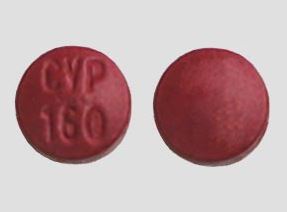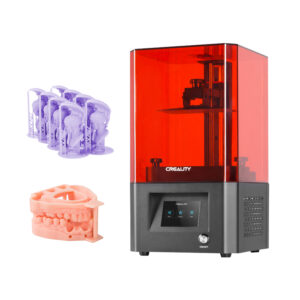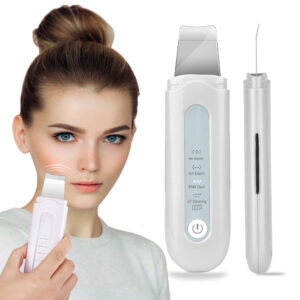Delivery Method: Via Electronic Mail – Delivery and Read Receipt Requested Product: Drugs Recipient:
Recipient Name
Lyndon R. Leitner
Staska Pharmaceuticals, Inc.
742 Evergreen Drive
Bennet, NE 68317-2365
United States
Issuing Office: Center for Drug Evaluation and Research (CDER)
United States
WARNING LETTER
WL # 699291
May 5, 2025
Dear Mr. Leitner:
You registered your facility with the U.S. Food and Drug Administration (FDA) as an outsourcing facility under section 503B of the Federal Food, Drug, and Cosmetic Act (FDCA) [21 U.S.C. § 353b]1 on December 3, 2020, and most recently on December 18, 2024. From September 3, 2024, to September 18, 2024, an FDA investigator inspected your facility, Staska Pharmaceuticals, Inc., located at 742 Evergreen Drive, Bennet, NE 68317. During the inspection, the investigator noted that drug products you produced failed to meet the conditions of section 503B of the FDCA necessary for drugs produced by an outsourcing facility to qualify for exemptions from certain provisions of the FDCA. In addition, the investigator noted serious deficiencies in your practices for producing drug products intended or expected to be sterile, which put patients at risk.
FDA issued a Form FDA 483 to your facility on September 18, 2024, and issued an amended Form FDA 483 on September 26, 2024. FDA acknowledges receipt of your facility’s responses, dated October 18, 2024, and January 31, 2025. FDA acknowledges that on September 30, 2024, your firm initiated a voluntary recall of one lot of Ascorbic Acid Solution for Injection 25,000mg/50mL (500mg/mL), 50mL single use vial, due to the presence of glass particulates.
Based on this inspection, it appears you produced drugs that violate the FDCA.
A. Compounded Drug Products under the FDCA
Under section 503B(b) of the FDCA, a compounder can register as an outsourcing facility with FDA. Drug products compounded by or under the direct supervision of a licensed pharmacist in an outsourcing facility qualify for exemptions from the drug approval requirements in section 505 of the FDCA [21 U.S.C. § 355(a)], the requirement in section 502(f)(1) of the FDCA [21 U.S.C. § 352(f)(1)] that labeling bear adequate directions for use and the Drug Supply Chain Security Act requirements in section 582 of the FDCA [21 U.S.C. § 360eee-1] if the conditions in section 503B of the FDCA are met.2
An outsourcing facility, which is defined in section 503B(d)(4) of the FDCA [21 U.S.C. § 353b(d)(4)], is a facility at one geographic location or address that — (i) is engaged in the compounding of sterile drugs; (ii) has elected to register as an outsourcing facility; and (iii) complies with all of the requirements of this section. Outsourcing facilities must comply with other applicable provisions of the FDCA, including section 501(a)(2)(B) [21 U.S.C. § 351(a)(2)(B)], regarding current good manufacturing practice (CGMP), and section 501(a)(2)(A) [21 U.S.C. § 351(a)(2)(A)], regarding insanitary conditions. Generally, CGMP requirements for the preparation of drug products are established in Title 21 of the Code of Federal Regulations (CFR) parts 210 and 211.
In addition, for a drug product compounded using bulk drug substances to qualify for exemptions under section 503B, each bulk drug substance used to compound a drug product must be manufactured by an establishment that is registered under section 510 of the FDCA [21 U.S.C § 360] (section 503B(a)(2)(C) of the FDCA [21 U.S.C. § 353b(a)(2)(C)]).
Furthermore, for a compounded drug product to qualify for the exemptions under section 503B, the labeling of the drug must include certain information (section 503B(a)(10) of the FDCA [21 U.S.C. §353b(a)(10)]).
B. Failure to Meet the Conditions of Section 503B
During the inspection, the FDA investigator noted that drug products produced by your facility failed to meet the conditions of section 503B. For example, the investigator noted:
1. Your facility compounded drug products using a bulk drug substance from (b)(4), which is not a registered establishment under section 510 of the FDCA.
2. Some of your facility’s drug products, such as (b)(4) and Glutathione Solution 2000mg/10ml (200mg/ml), did not include the following information on the container: information to facilitate adverse event reporting: www.fda.gov/medwatch and 1-800-FDA-1088. In addition, some of your facility’s drug products, such as Ascorbic Acid Solution 25000mg/50ml (500mg/ml) and Lidocaine HCl 2% Buffered Solution 1000mg/50ml (20mg/ml), also did not include the following information on the container: directions for use, including, as appropriate, dosage and administration.
Because your compounded drug products have not met all of the conditions of section 503B, they are not eligible for the exemptions in that section from the FDA approval requirements of section 505, the requirement under section 502(f)(1) that labeling bear adequate directions for use, and the Drug Supply Chain Security Act requirements described in section 582 of the FDCA.
Specific violations are described below.
C. Violations of the FDCA
Adulterated Drug Products
The FDA investigator noted that drug products intended or expected to be sterile were prepared, packed, or held under insanitary conditions, whereby they may have become contaminated with filth or rendered injurious to health, causing your drug products to be adulterated under section 501(a)(2)(A) of the FDCA. For example, the investigator noted:
1. Aseptic operators reaching into the ISO 5 laminar flow hood past their elbows during aseptic production. However, microbial contamination action limit for personnel monitoring of the elbows is (b)(4). This practice may introduce contamination into the ISO 5 work area.
2. Your media fills were not performed under the most challenging or stressful conditions. Therefore, there is a lack of assurance that your firm can aseptically produce drug products within your facility.
3. Your firm failed to perform adequate smoke studies under dynamic conditions to demonstrate unidirectional airflow within the ISO 5 area. Therefore, your products intended to be sterile are produced in an environment that may not provide adequate protection against the risk of contamination.
The FDA investigator also noted CGMP violations at your facility, that caused your drug product(s) to be adulterated within the meaning of section 501(a)(2)(B) of the FDCA. The violations include, for example:
1. Your firm failed to thoroughly investigate any unexplained discrepancy or failure of a batch or any of its components to meet any of its specifications, whether or not the batch has already been distributed (21 CFR 211.192).
2. Your firm failed to establish adequate written procedures for production and process control designed to assure that the drug products you manufacture have the identity, strength, quality, and purity they purport or are represented to possess (21 CFR 211.100(a)).
3. Your firm failed to ensure that each person engaged in the manufacture, processing, packing, or holding of a drug product has the education, training, and experience, or any combination thereof, to enable that person to perform his or her assigned functions (21 CFR 211.25(a)).
4. Your firm failed to establish an adequate system for monitoring environmental conditions in aseptic processing areas (21 CFR 211.42(c)(10)(iv)).
5. Your firm failed to clean, maintain, and, as appropriate for the nature of the drug, sanitize and/or sterilize equipment and utensils at appropriate intervals to prevent malfunctions or contamination that would alter the safety, identity, strength, quality, or purity of the drug product beyond the official or other established requirements (21 CFR 211.67(a)).
6. Your firm failed to establish and follow appropriate written procedures that are designed to prevent microbiological contamination of drug products purporting to be sterile, and that include validation of all aseptic and sterilization processes (21 CFR 211.113(b)).
Outsourcing facilities must comply with CGMP requirements under section 501(a)(2)(B) of the FDCA. FDA’s regulations regarding CGMP requirements for the preparation of drug products have been established in 21 CFR parts 210 and 211. FDA intends to promulgate more specific CGMP regulations for outsourcing facilities. FDA has issued a revised draft guidance, Current Good Manufacturing Practice — Guidance for Human Drug Compounding Outsourcing Facilities under Section 503B of the FD&C Act. This draft guidance, when finalized, will describe FDA’s expectations regarding outsourcing facilities and the CGMP requirements in 21 CFR parts 210 and 211 until more specific CGMP regulations for outsourcing facilities are promulgated.
Under section 301(a) of the FDCA [21 U.S.C. § 331(a)], the introduction or delivery for introduction into interstate commerce of any drug that is adulterated is a prohibited act. Further, it is a prohibited act under section 301(k) of the FDCA [21 U.S.C. § 331(k)] to do any act with respect to a drug, if such act is done while the drug is held for sale after shipment in interstate commerce and results in the drug being adulterated
Unapproved New Drug Products
You do not have any FDA-approved applications on file for drug products that you compound.3 Under sections 505(a) and 301(d) of the FDCA [21 U.S.C. §§ 331(d)] a new drug may not be introduced into or delivered for introduction into interstate commerce unless an application approved by FDA under section 505 of the FDCA is in effect for the drug. Marketing of these products, or other applicable products, without an approved application violates these provisions of the FDCA.
Misbranded Drug Products
You compound drug products that are intended for conditions not amenable to self-diagnosis and treatment by individuals who are not medical practitioners; therefore, adequate directions for use cannot be written so that a layman can use these products safely for their intended uses. Consequently, their labeling fails to bear adequate directions for their intended uses causing them to be misbranded under section 502(f)(1) of the FDCA.4 The introduction or delivery for introduction into interstate commerce of these products therefore violates section 301(a) of the FDCA. Further, it is also a prohibited act under section 301(k) of the FDCA to do any act with respect to a drug, if such act is done while the drug is held for sale after shipment in interstate commerce and results in the drug being misbranded.
D. Corrective Actions
We have reviewed your facility’s response to the Form FDA 483. We acknowledge that on September 30, 2024, your firm initiated a voluntary recall of one lot of Ascorbic Acid Solution for Injection 25,000mg/50mL (500mg/mL), 50mL single use vial, due to the presence of glass particulates.
We are unable to fully evaluate some of your corrective actions due to lack of adequate supporting documentation:
1. Regarding your firm’s failure to ensure that each person engaged in the manufacture, processing, packing, or holding of a drug product has the education, training, and experience, or any combination thereof, to enable that person to perform his or her assigned functions:
a. We acknowledge your firm is committed to ensuring your qualification program is representative of current manufacturing operations, a robust training program is in place, and will draft procedures specific to the preparation and maintenance of defective units to align with routine manufacturing. However, you did not provide documentation ensuring your Quality Assurance staff will review the library of defective samples, including examples from the lower limits of visual detection and if new particulate matter defect will be added to the training library.
b. We acknowledge your firm is committed to evaluate your empirical data and trends over the next (b)(4) to aid in the establishment of limits for the false rejection of acceptable units during qualification activities. However, your firm did not provide documentation supporting quality risk assessments during your developmental phase.
c. We acknowledge your firm conducted training on 09/20/2024 with visual inspection operators related to proper technique requirements for full rotation. However, your firm did not provide documentation addressing corrective actions/preventative actions for the firm’s current visual inspection (VI) inspectors that passed VI qualification but did not adhere to the timeframe requirements set forth within the firm’s written procedure.
2. Regarding your firm’s failure to establish an adequate system for monitoring environmental conditions in aseptic processing areas:
a. We acknowledge that you have removed personnel monitoring from SOP MC0l0, Environmental Monitoring, and drafted a new SOP MC028 Aseptic Filling Room Personnel Monitoring; however, you did not provide complete copies of SOP MC028 and SOP MC0l0. In addition, you stated a retrospective review of all personnel monitoring data for 2024 was performed; however, a completed copy of your firm’s retrospective review was not provided.
b. We acknowledge that your firm recognized “the critical importance of aseptic technique in sterile drug product manufacturing” and initiated CAPA/PD/010/24 (Annexure 7.A.1). However, we could not evaluate your response due to lack of supporting documentation for the following line items:
i. Item 1: Your SOP currently states “the limit for all ISO 5 gowning samples was set to (b)(4).” The correct limit should be <1 CFU.
ii. Item 2: Annexure 4.2 shows (b)(4) employees received this training; however, it is unclear in what capacity Warehouse (WH) and IPQA (In-process Quality Assurance) personnel are involved in aseptic operations. You did not provide documentation supporting WH and IPQA involvement in aseptic operations.
iii. Item 5: states you will “implement [the use of] (b)(4) sterile sleeves for operators when performing necessary manipulations.” However, you did not define “necessary manipulations,” provide a certificate of analysis for the sterile sleeves, describe the material make of the sterile sleeves, describe your personnel qualification process for sterile sleeve use, nor describe the sequence of gowning as it relates to donning sterile sleeves, and where Sterile (b)(4) is applied.
iv. Item 7: It is unclear where your aseptic operators don the (b)(4) sterile sleeves and where (b)(4) sterile (b)(4) is applied, what the duration of use is before changing the (b)(4) sterile sleeves, and how the use of the (b)(4) sterile sleeves is different from your firm’s current procedure for entering an ISO 5 environment.
v. Item 9: states SOP MC010 Environmental Monitoring was updated to Version 07. However, you did not provide a full copy of the updated SOP in your response.
vi. Item 10: states you will perform a “review and revision of the Media Fill validation protocol to ensure that the methodology, rationale, and documentation meet industry standards.” However, this document is in draft and not signed/reviewed by Quality, the document does not address the donning of sterile sleeves and your firm’s solution in the interim is unclear.
3. Regarding your firm’s failure to establish written procedures for production and process controls designed to assure that the drug products you manufacture have the identity, strength, quality, and purity they purport or are represented to possess:
a. We acknowledge that your firm has completed the first process validation (PV) study for Buffered Lidocaine HCI 2%, 20 mg/ml 50 ml vial and provided the protocol, also, that you initiated CAPA/PD/009/24 on 09/20/2024, provided Master Process Validation Protocol and Record of Observations. You also stated that your firm’s “overall target completion timeline for this CAPA is (b)(4).” These corrective actions cannot be fully evaluated until FDA receives the status updates for in-process activities and summary reports for the completed PVs. In addition, the interim status of your firm’s current operations for all drug products is unclear.
4. Regarding your firm’s failure to establish and follow appropriate written procedures that are designed to prevent microbiological contamination of drug products purporting to be sterile, and that include validation of all aseptic and sterilization processes:
a. We acknowledge that your firm initiated CAPA/ PD/010/24 (Annexure 7.A.1) to include the review and revision of media fill protocol; revision of all media fill batch manufacturing records (BMRs) to include documentation of all critical details, including but not limited to personnel activities, and interventions; training of personnel on updated procedures; and airflow visualization studies.
i. However, your firm’s media fill protocol (Annexure 7.A.2), appears to be in draft form and addresses “worst-case” challenges related to vial production; moreover, the “worst-case” scenarios are not defined. In addition, updates to the media fill protocol, summary report and media fill BMR is ongoing pending your firm’s updated responses.
ii. We acknowledge that your firm provided updated smoke studies, with multiple angles; however, the smoke studies cannot be evaluated due to the position of the smoke source in relation to items within the ISO-5 space, as observed in these exhibits:
a. Annexure 7.D.4.1: Dynamic Airflow Visualization QC Sampling
b. Annexure 7.D.4.2: Dynamic Airflow Visualizing Supply Loading, Dynamic Airflow Visualization QC Sample Collection, Dynamic Airflow Visualization Empty Tray Change, and Dynamic Airflow Visualization Product Tray Change.
c. Annexure 7.D.5: Informational Airflow Visualization Stock Solution Placement. Note our review of this exhibit revealed that the operator holding the smoke nozzle appears to simultaneously shift the direction of the smoke nozzle as aseptic operator moves the (b)(4) bag from (b)(4) to the HEPA to the (b)(4) to the HEPA within the ISO-5 LAF. Therefore, it is unclear if ISO-7 air is entering the ISO-5 space when the (b)(4) bag is in the (b)(4) position.
5. Regarding your firm’s failure to establish and follow appropriate written procedures that are designed to prevent microbiological contamination of drug products purporting to be sterile, and that include validation of all aseptic and sterilization processes:
a. We acknowledge that your firm recognized FDA’s requirement to establish the reliability of the supplier’s certificate of analysis (COA); clarified and provided documentation for the recovery of gram-negative bacteria and/or yeast at their facility; confirmed the supplier’s COA supports growth of gram-negative bacteria and yeast by a 3rd party testing laboratory. However, the COA from your firm’s media supplier was not provided to show growth promotion testing was evaluated. In addition, a full copy of revision of SOP MC015 Growth Promotion Test of Microbiological Media was not provided. In addition, in your 10/18/2024 response, your firm committed to performing growth promotion testing. However, this was not provided in your 01/31/2025 update.
Some of your corrective actions appear deficient:
1. Regarding your firm’s failure to thoroughly investigate other lots that may have been affected due to defects including glass particles, package defects, sealing defects and abnormal fill volume:
a. We acknowledge that your firm-initiated deviation DR/PD/22/09/004 on 10/01/2022; however, you did not expand the investigation to other lots to confirm this was an isolated issue. In your 10/18/2024 response, you did not provide documentation for vial lot reconciliation, such as purchase orders or vial disposition, leaving uncertainty as to whether this vial lot was used in other products. As part of your corrective actions, you implemented SOP PD039 (effective 9/20/2024). Notably, section 5.2.3 of SOP PD039 states that “if the lot is previously received and approved, no additional testing is required and can proceed directly to the approval process.” Relying on prior approval without re-evaluation is not a sufficient corrective action—especially considering your “findings” under the same deviation listed above was “Empty vials contaminated with glass pieces and scratches on the outer body of the vials due to rattling in the transportation.”
b. We acknowledge that your firm recalled Ascorbic Acid 500mg/mL 50mL Vials for sterile injection Lot (b)(4), BUD 12/31/2024; however, you did not conduct a thorough investigation to include evaluation of the other (b)(4) vial lots ((b)(4)) involved in the production of this lot. It appears you only evaluated lot (b)(4) and found this lot to be the sole culprit of glass shards. In addition, you did not identify a root cause as to why glass was found in lot (b)(4). You did not expand the investigation to other lots to ensure that this was an isolated incident. Furthermore, you did not provide documentation supporting vial lot reconciliation, specifically for vial lot (b)(4) (culprit lot).
Furthermore, SOP section 5.5.2 focuses only on critical defects (particles and fibers), without addressing major or minor defects. You also did not justify why testing a (b)(4) tray ((b)(4)) is adequate for retains and incoming inspection.
c. You did not expand your corrective actions to encompass other investigations to ensure the inclusion of other potentially affected lots. For example, our review of data collected during the inspection revealed that your firm failed to thoroughly investigate DR/PD/22/11/010, which involved the rejection of (b)(4) vials from lot (b)(4) and the rejection of (b)(4) vials from lot (b)(4) due to particle contamination and identified the use of non-cleanroom (b)(4) bags during packaging as the source of fiber contaminants. However, your investigation did not extend to evaluate other lots of vials packaged using these non-cleanroom (b)(4) bags, nor did it clarify how long these bags were used. At least (b)(4) batches were produced between 11/8-28/2022, but the investigation does not address when your firm switched from the use of non-cleanroom (b)(4) bags to cleanroom bags.
2. Regarding your firm’s failure to establish adequate written procedures:
a. We acknowledge that your firm initiated CAPA/PD/018/24 on 10/04/2024 (Annexure 2.1) to implement significant improvements to the visual inspection program. However, the SOP PD017, Operation Visual Inspection, lacks scientific justification for the defect alert limits and it is unclear as to what defines action limits. Furthermore, you did not outline immediate corrective action for this observation under current operations.
b. We acknowledge that your firm initiated CAPA/PD/016/24 which includes:
i. A revision of “SOP QA012 Preparation, Issuance & Control of BMR, requiring all components are captured in the batch manufacturing record” and personnel trainings on this procedure.
ii. A revision of SOP QA042 revision 01, Preparation and Approval of Label Artworks, to require that all ingredients, including those used to adjust (b)(4), are listed in the primary drug product labeling.
You consider this observation closed. However, based on review of your PV protocol for Buffered Lidocaine HCI 2%, 20 mg/ml 50 ml vial, a gap analysis was not included. Therefore, it is unclear if the changes made in the gap analysis will be included in your PV protocols for each drug product.
c. We acknowledge that your firm initiated a hold time study protocol (Annexure 6.C.1) for Ascorbic Acid Preserved 500 mg/ml bulk solution on 10/01/2024. We also acknowledge that the chemical analysis was completed (all within specifications; Annexure 6.C.3), and bioburden test results were expected on 18OCT2024; we acknowledge you will provide the approved study Summary Report to FDA in the next progress update; and CAPA/PD/013/24 (Annexure 6.C.4) was opened on 10/01/2024 to track all relevant actions related to hold time study validation and necessary assessments for other processes. However, hold time studies should be evaluated as part of your firm’s PV protocol, which is not completed per your firm’s updated response on 01/31/2025. In addition, an updated aseptic process simulation (media fills) will be needed for evaluation. The media fills should include simulation of your firm’s most challenging conditions (e.g., but not limited to, stuck syringes and interventions to remove syringe).
3. Regarding your firm’s failure to clean, maintain, and, as appropriate for the nature of the drug, sanitize and/or sterilize equipment and utensils at appropriate intervals to prevent malfunctions or contamination that would alter the safety, identity, strength, quality, or purity of the drug product beyond the official or other established requirements:
a. We acknowledge that your firm plans to provide updated responses starting in January 2025. You also stated you initiated a change control (CAPA/PD/014/24)(Annexure 5.A.1) to incorporate sterile (b)(4) and drug product-dedicated (b)(4); revise existing and draft new procedures for their use, cleaning, and a method to ensure product-dedication; and train staff. Your firm provided written procedure, SOP PD045, (b)(4) Sterile (b)(4) for Stainless Steel Pot revision 0, with an effective date of 01/06/2025 and associated training records; however, you did not provide scientific justification for the effectiveness of your cleaning protocols in removing residuals that come in contact with equipment and utensils (e.g., APIs, excipients, cleaning agents, and microbial contaminants) with or without the use of sterile (b)(4) and drug product-dedicated (b)(4); nor validated their use, nor provided an interim solution during the validation process. Furthermore, it is unclear if your firm has validated the use of the (b)(4) and drug product dedicated (b)(4) for your drug products.
In addition to the issues discussed above, you should note that CGMP requires the implementation of quality oversight and controls over the manufacture of drugs, including the safety of raw materials, materials used in drug manufacturing, and finished drug products. See section 501 of the FDCA. If you choose to contract with a laboratory to perform some functions required by CGMP, it is essential that you select a qualified contractor and that you maintain sufficient oversight of the contractor’s operations to ensure that it is fully CGMP compliant. Regardless of whether you rely on a contract facility, you are responsible for assuring that drugs you produce are neither adulterated nor misbranded. [See 21 CFR 210.1(b), 21 CFR 200.10(b).]
In addition, regarding issues related to the conditions of section 503B of the FDCA, your corrective actions appear adequate:
1. You state that you have “removed the bulk drug substance manufactured by (b)(4). from the Approved Supplier List,” disqualified the manufacturer as a bulk drug substance supplier, and revised your procedures to ensure that “all bulk drug substances come from approved and registered vendors.”
2. You have submitted revised product labeling and revised your procedures “to clearly define the required elements required on every label to comply with 503B(a)(10)(B).” You also state that (b)(4) has been discontinued.
Should you continue to compound and distribute drug products that do not meet the conditions of section 503B, the compounding and distribution of your drugs would be subject to the new drug approval requirement, the requirement to label drug products with adequate directions for use, and the Drug Supply Chain Security Act requirements.
FDA strongly recommends that your management undertake a comprehensive assessment of operations, including facility design, procedures, personnel, processes, maintenance, materials, and systems. In particular, this review should assess your aseptic processing operations. A third party consultant with relevant sterile drug manufacturing expertise should assist you in conducting this comprehensive evaluation.
E. Conclusion
The violations cited in this letter are not intended to be an all-inclusive statement of violations at your facility. You are responsible for investigating and determining the causes of any violations and for preventing their recurrence or the occurrence of other violations. It is your responsibility to ensure that your firm complies with all requirements of federal law, including FDA regulations.
Within fifteen (15) working days of receipt of this letter, please notify this office in writing of the specific steps that you have taken to address any violations. Please include an explanation of each step being taken to prevent the recurrence of violations, as well as copies of related documentation. This letter notifies you of our concerns and provides you an opportunity to address them. If you believe your products are not in violation of the FDCA, include your reasoning and any supporting information for our consideration. If you cannot completely address this matter within fifteen (15) working days, state the reason for the delay and the time within which you will do so.
All correspondence should refer to the Warning Letter Number above (WL # 699291) and include a subject line that clearly identifies the submission as a Response to Warning Letter. If you have questions regarding the contents of this letter, please contact compoundinginspections@fda.hhs.gov.
Sincerely,
/S/
F. Gail Bormel, JD, RPh
Director
Office of Compounding Quality and Compliance
Office of Compliance
Center for Drug Evaluation and Research
________________
1 See Pub. L. No. 113-54, § 102(a), 127 Stat. 587, 587-588 (2013).
2 We remind you that there are conditions, other than those discussed in this letter, that must be satisfied to qualify for the exemptions in section 503B of the FDCA.
3 The specific products made by your firm are drugs within the meaning of section 201(g) of the FDCA [21 U.S.C. § 321(g)] because they are intended for use in the diagnosis, cure, mitigation, treatment, or prevention of diseases and/or because they are intended to affect the structure or any function of the body. Further, they are “new drugs” within the meaning of section 201(p) of the FDCA [21 U.S.C. § 321(p)] because they are not generally recognized as safe and effective for their labeled uses.
4 Your compounded drug products are not exempted from the requirements of section 502(f)(1) of the FDCA by regulations issued by the FDA (see, e.g., 21 CFR 201.115).







